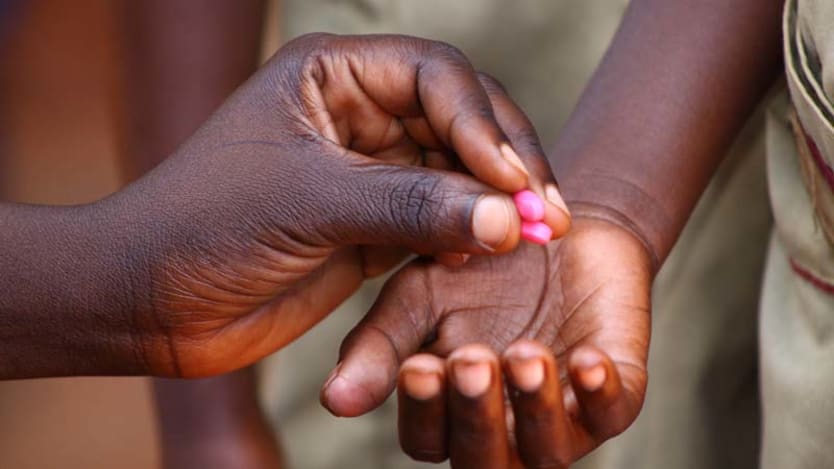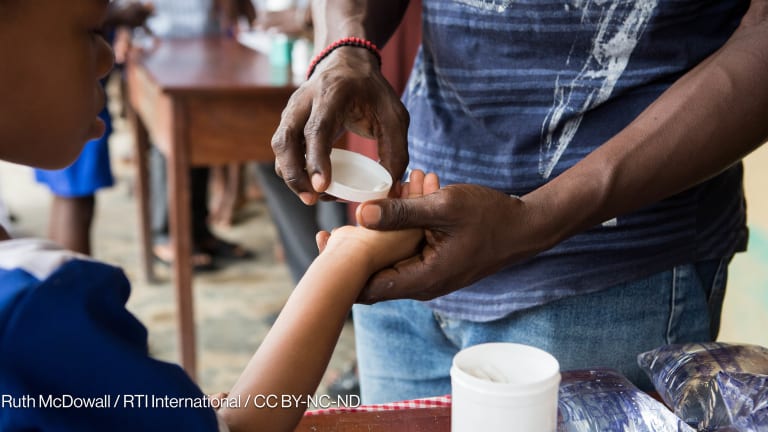
Last week, scientists, investors, executives of pharmaceutical companies and public health workers came together in Geneva, Switzerland, for a multi-day summit on tackling Neglected Tropical Diseases, which culminated in the signing of the Geneva Commitment for the next stage of the fight.
Heralded as an important public health success story, the summit noted that 60 percent of those in need have now received treatment for at least one NTD — a group of 18 poverty-related parasitic and bacterial infectious diseases — on the back of large drug donations from pharmaceutical companies and partners who have helped to deliver them.
As some of the diseases — such as Lymphatic Filariasis and Guinea worm disease — move toward elimination, Dr Anarfi Asamoa-Baah, deputy director-general of the World Health Organization, declared that “the last mile is now.”
But despite the optimism, the summit also highlighted that nearly 600 million of those in need are yet to be reached.
The week saw renewed momentum around the NTDs in Geneva, kicking off with an event organized by The Bill & Melinda Gates Foundation, followed by the Global Partners Meeting at the WHO and two-days of talks and sessions at the NTD Summit.
Commitments made on neglected tropical diseases at WHO summit
On the first day of a summit in Geneva, Switzerland, international organizations committed to prioritize the issue — with more than half a billion dollars worth of new support pledged in recent days — amid claims that at least one disease is nearing eradication.
Discussions included addressing gaps in diagnostics and research and finding innovative ways to finance the fight. A slew of commitments yielded more than half a billion dollars worth of new investment and a range of issues came to the fore. Hundreds of experts discussed strategic goals for the future; the importance of integrating NTDs into wider health systems and the Sustainable Development Goals; and the nuts and bolts of programmatic priorities and lessons learned.
Here are some of the key takeaways from the week.
1. The next stage of the fight: Integration
The progress of recent years means that the fight against NTDs has evolved. Andy Wright, vice president of global health programmes at GlaxoSmithKline, said that it is now important to reshape priorities and goals. “The industry wants to be a part of something bold,” he said.
There is recognition that different sets of approaches and tools will be required for the next stage of the fight — including, crucially, linking NTDs to wider health goals. “People suffering from NTDs need more than medicines,” said Bruce Gordon, coordinator of water, sanitation, hygiene and health at the WHO.
Many at the summit linked the progress of combating NTDs to meeting several SDGs including on health; poverty reduction; reducing malnutrition; improving water, sanitation and hygiene; and better urbanization.
Integration of the NTDs into the wider health services of countries was an overarching theme throughout the conference. “Endemic countries should be central in this fight and must own this,” said Dr. Asamoa-Baah. External funders can have only a limited impact, he added — although it was also acknowledged that a significant number of people suffering from NTDs now live in the G20 countries, including in China, India and Brazil.
At the same time, it was noted that community workers and volunteers are already overstretched, combining a range of programs from maternal health to TB, malaria and others. While integration makes economic sense, it may be limited by human resource constraints in the field. It was added that addressing NTDs in some places has been neglected on account of conflict and other challenges.
2. New tools needed for vector control
Although securing enough funding is crucial, better diagnostics and improved vector control will also be important tools to fight NTDs now and in the future, experts said. Given the diversity in the diseases in terms of transmission, vectors, the ecology and the communities in which they spread, a one-size-fits-all approach will not work, they said.
Delegates highlighted the use of digital technologies in driving the optimization of diagnostics. Speaking to Devex on the sidelines of the conference, Larry Slutsker, director of malaria and NTDs at Path, said that better diagnostics would be “key” to improving diagnoses at point of care and understanding the overall distribution of diseases through surveys. Continued research for new tools for vector-borne NTDs as well as malaria is a cross-cutting need, he added.
Others agreed that monitoring and surveillance would be cornerstones in the fight. Governments typically withdraw investment from vector control and disband teams as diseases become less threatening, a mistake that can result in the renewed spread of vector-borne diseases, said Margaret Chan, director-general of the WHO.
Finally, the importance of cross-sectoral initiatives to address vector control was raised, including by addressing NTDs in the context of urbanization challenges, antimicrobial resistance and climate change, since these have repercussions on how the diseases evolve and spread, experts noted. Vectors of the diseases are highly vulnerable to climate change.
3. Drug donation versus development
A big part of the success in reaching those suffering from NTDs is attributed to mass drug administration made possible by large donations of drugs from pharmaceutical companies. In the five years since the London Declaration — when key stakeholders agreed to collaborate in the fight against NTDs — 10 pharmaceutical companies have donated over 7 billion treatments. The total cost of drugs that are being donated is between $2 billion and $3 billion per year, according to Emeritus Professor David Molyneux of the Liverpool School of Tropical Medicine.
Last week's gathering, attended by the CEOs of nine pharmaceutical companies, illustrated that NTDs are a priority for the industry, said Wright of GSK. “The trajectory of the provision of medicines is on the rise,” he added.
Strides in progress on Neglected Tropical Diseases as global partners meet
A new report from the World Health Organization suggests that the number of people at-risk from Neglected Tropical Diseases is down by 20 percent over the past five years, as public and private sector representatives gather in Geneva, Switzerland, to discuss the road ahead
But while the industry's role in fighting NTDs has been crucial, some experts suggested that donations may not be sustainable in the long term.
“Donations generally cannot be the way forward,” said Michelle Childs, spokesperson for the Drugs for Neglected Diseases Initiative. “The willingness of companies to donate might change.” She added that donations “do not address the continuing need for new and improved treatments for NTDs.”
R&D for NTDs is seen as a nonviable investment for an industry driven by monopolies on intellectual property and where high returns on drugs are key. Given that NTDs are prevalent among poor communities with little purchasing capacity, the industry has shied away from pouring money into research.
“To be sure, in defined areas in NTDs, where there is no interest of generic producers, donations are important and very helpful,” Childs continued. “But if there is a potential market, just giving medicines away will kill a more sustainable supply and an opportunity for generic producers.”
DNDi has pioneered collaboration with companies and research institutions to help develop affordable and new drugs for neglected diseases at a cost far lower than industry. It is expected to have delivered 18 new treatments by 2023 for less than $700 million.
Professor Molyneux also told Devex that governments should buy the drugs and provide them for free, since they are on the WHO Essential Medicines List. “This is, after all, priority investment for the health sector,” he said.
4. Financing the elimination of NTDs
How the fight against NTDs evolves will depend on the sources and kinds of financing that become available.
The WHO report on NTDs, released ahead of the summit, argued that the cost of fighting NTDs is relatively low but continues to be underfunded. “A relatively small amount of financing was needed to have big impact on NTDs,” Christopher Fitzpatrick, a health economist working on NTDs at the WHO, said.
While more than $150 billion will be needed to achieve the SDGs in low-income countries, new investments of $150 million annually until 2020 will be enough to cover populations in sub-Saharan Africa, which account for more than half of those who have not yet been treated for NTDs, according to the WHO.
The report said that foreign aid for NTDs amounted to about $200 to $300 million per year between 2012 and 2014, excluding the dollar-value of donated medicines. The United States and United Kingdom have made significant investments to date, delegates said, but others could do more.
Professor Molyneux told Devex: “I am disappointed that Germany, France and Switzerland are not investing in NTDs — the best buys in public health.” These countries should be doing more, he said.
Read more international development news online, and subscribe to The Development Newswire to receive the latest from the world’s leading donors and decision-makers — emailed to you free every business day.








